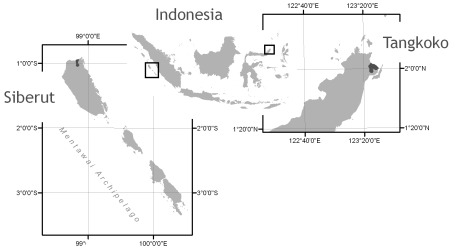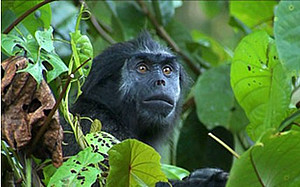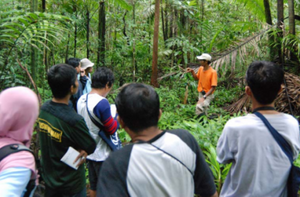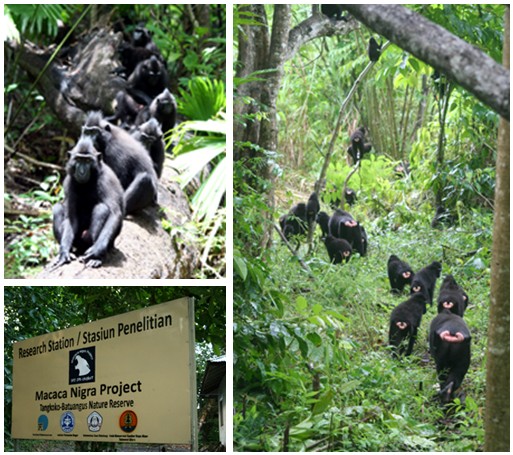Conservation Biology
Non-human primates represent an important biological resource, but one that is rapidly diminishing as more and more primate species become endangered in their natural habitat. In order to conserve primate populations in the wild, it is becoming increasingly necessary to develop a more integrated approach in which biological research complements practical conservation activities designed to promote sustainable resource management. It is this dual approach that forms the basis of our extensive conservation management programmes in Indonesia, primarily for the Mentawai primates as part of the Siberut Conservation Programme (SCP; see also Flyer) but also in our work on the black crested macaques of Sulawesi (Macaca nigra project).

Mentawai Island
The Mentawai Archipelago, comprising the four main islands of Siberut, Sipora, North and South Pagai, lies approximately 150 km off the west coast of Sumatra (Indonesia), and belongs to one of the global Hotspots of Biodiversity (Sundaland). Largely due to its extended period of geographical separation from the mainland, the island chain has evolved an unusually high degree of biological richness and species endemism.

Working from our field base in the heart of 4500 ha of primary rainforest in N Siberut, an international team of biologists is working to create a database for conservation in the region. The focus of our efforts are Siberuts four endemic and highly endangered primates (Simias concolor, Presbytis potenziani, Macaca siberu, Hylobates klossii), which are not only of considerable evolutionary interest, but also serve as flagship species drawing attention to the consequences of habitat loss on wildlife communities as a whole. Project areas include: phylogenetics, behaviour, ecology and habitat use, population biology, ethnobotany and agroforestry.

In addition to conducting biological research, we are also working closely with village communities in the region to integrate the needs of local people into conservation objectives. Operating out of its neighbouring village base at Politcioman, SCP´s community empowerment programme is aimed at improving welfare and child education as well as at encouraging new sustainable approaches to local income generation. Projects currently underway include provision of solar derived energy to village inhabitants, health and hygiene measures, and marketing of agro-forestry products.
Sulawesi
The Sulawesi macaques, endemic to the island, are of particular importance for our understanding of primate evolution, adaptive radiation and speciation. They have however, not been extensively studied in the wild, and thus knowledge about their ecological and reproductive characteristics as well as their vulnerability and response to habitat disturbance and human contact remains limited. At the same time, the natural habitat of the Sulawesi macaques is declining rapidly and all species are considered to be threatened (range from vulnerable to endangered; IUCN Red List 2006).
The crested black macaques (Macaca nigra) are one of the most endangered Sulawesi macaque species and are currently found only on the northern tip of the island. So far, almost nothing is known about the reproductive biology and ecology of this species in the wild. Using our in 2006 established research station in the Tangkoko Nature Reserve as a field base, our aim is to investigate reproductive demography, feeding ecology, population structure and environmental stressors in order to contribute to a biological database essential for the effective management and conservation of this species.

